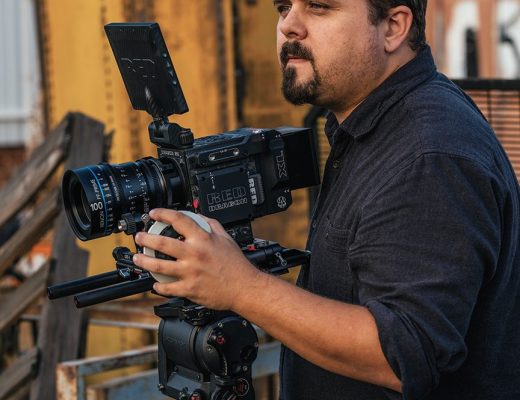I've been getting sporadic complaints on Twitter about one of my C300 matrices turning reds a bit blue on some cameras. Time to take another look…
In this article I wrote about how I endeavored to match the color of a Canon C300 to an Arri Alexa. At the time, according to the scopes and the monitor I used, I'd succeeded. I've now gotten some complaints, including pictures, saying that my daylight look makes reds look a little purple on some C300s. It seems that different versions of the camera's firmware may result in different colormetry.
I'm going to go through my matrices again on Friday and see what I can figure out. I probably won't call the new version “Alexa emulation” matrices because the matrices I built do seem to match the Arri Alexa's beautiful color according to a test chart and high-end monitor, at last in accuracy if not in perfect saturation, but there's much more going on beneath the surface of Canon's color that I don't understand yet. Instead of attempting to replicate Arri's look I'm simply going to aim for color accuracy instead. (In essence, though, that is Arri's look.)
I played around with the C300 matrices yesterday during lunch on a shoot and was reminded just how hard it is to get both red and flesh tone dead-on accurate at the same time. Also, Canon cameras really emphasize red, probably because they put flesh tone ahead of all else, and there may be a very good reason why they tend to cheat red a little toward orange in most of their matrices:
If your camera's colorimetry really punches up red, it's always better to err on the side of orange-red than blue red so as to avoid compromising flesh tone as well as dulling bright reds.
To my eye, anyway, I find orange-biased reds less offensive than blue-biased reds, and I suspect Canon feels the same.
I'm not defeated yet. I'm going back into Chater camera on Friday and I'm going to tinker around some more. I really do want to try to get accurate reds and flesh tones at the same time. Getting an accurate blue doesn't seem to be difficult, although I suspect that–like most cameras–I won't be able to nail flesh tones and green at the same time, at least under tungsten, but green is one of those colors that can drift a little and we don't seem to care.
What's interesting is that I was a little nervous about the tungsten matrix because I tweaked phase, which seems a bit to me like cheating, and yet that matrix seems fine. That may be my starting point in the future: rotating phase to make red accurate, and then nudging the other vectors to perfection… or as close as I can get. (I did that in the matrix I show below and ended up doing very little tweaking.)
It is interesting, though, to note that Canon's color, while not accurate, can be very pretty, and it's clear they've learned which way to nudge hues to get what they think is the best look out of their camera. They put flesh tone first and foremost: people will always look great. The other colors will look good, but maybe not accurate.
Matrix adjustments are very tricky things because every element interacts. Tweaking saturation in one color means adjusting hue in another. Complementary colors interact as well: reducing blue saturation, for example, reduces yellow saturation also, and as yellow is a major component of flesh tone it may be best to leave blue saturation alone and punch up everything else to match.
If you're one of those people who are getting blueish reds from my previous daylight matrix I cobbled up a temporary one on set yesterday that may be worth trying. The regular disclaimers apply, which can be summed up as use at your own risk. These numbers are provided as a courtesy, and for fun, so before using them professionally please test, test, test.
Phase: +11
R-G: 0
R-B: 0
G-R: 0
G-B: +21
B-R: 0
B-G: 0
Gain to taste.
More after my trip to Chater Camera on Friday.
2/5/2013
Art Adams
Director of Photography
www.artadamsdp.com
Twitter: @artadams

Filmtools
Filmmakers go-to destination for pre-production, production & post production equipment!
Shop Now













